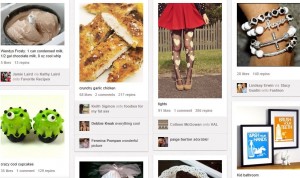While searching around the web for marketing information, you've probably come across the term “Inbound Marketing.” It seems to be gaining more and more steam, and people are more interested in what Inbound Marketing is and how it can help them.
Inbound Marketing is the practice of bringing warm, qualified leads into your sales funnel rather than reaching outward to cold, questionable targets
Traditional “outbound marketing” was largely focused on outbound methods such as cold calls, print ads, attending tradeshows, etc. The idea behind these techniques was to get in front of cold leads and warm them up to the point where they would try your product or service.
This form of marketing was largely a numbers game – you knew you had to, on average, get in contact with a certain large number of people before one of them would be interested and make a purchase. This method was inefficient and expensive, causing marketers to waste time getting in contact with tons of people who may have had no interest in their offering.
Due to the past recession worries, Inbound Marketing has become more popular as marketers look for efficient and affordable ways to acquire new leads. Some of the most popular Inbound Marketing techniques are blogging, interacting on social media, search engine optimization, and webinars.
All of these inbound methods pre-qualify the leads that discover your company, so you can be sure that your message is greeting welcoming ears rather than random outbound contacts. By bringing these warm leads into you, you will greatly save time and money on the old outbound strategies.
How Can I Use Inbound Marketing?
The most important part of a successful inbound marketing strategy is creating great content that will bring people into your sales process. Another important element is ensuring that you have a site that is optimized to close leads into deals and engages visitors once they “land” on your website.
One of the most popular methods to accomplish this goal is by keeping an updated blog. A blog can provide many benefits for your organization, and almost all of them relate to Inbound Marketing. By creating great content, you'll rise in organic search results, create linkable content, and educate your audience. All of these outcomes will help you bring in warm leads that have been pre-qualified through a Google search for relevant terms or by reading similar content that links to you.
In addition to blogging, there are many other forms of great content to create that will bring interested visitors. Hosting webinars, offering e-books for download, and article / content syndication will all attract leads that are interested in your offerings and are eager to engage in a conversation with you about your business.
By sticking with these Inbound Marketing strategies, you'll continually bring in new leads and grow in authority, however, it won't happen overnight. While Inbound Marketing will save you money, it does take an ample commitment and patience. You won't be the top Google result for desired terms overnight and your first webinar may only have a few people register, but by making a longterm commitment to inbound marketing you will see results.
This commitment requires that you create quality content through a Content Management System, engage with people through social media, and try new ideas to bring traffic to your site.
Take the next step towards a rewarding career…






